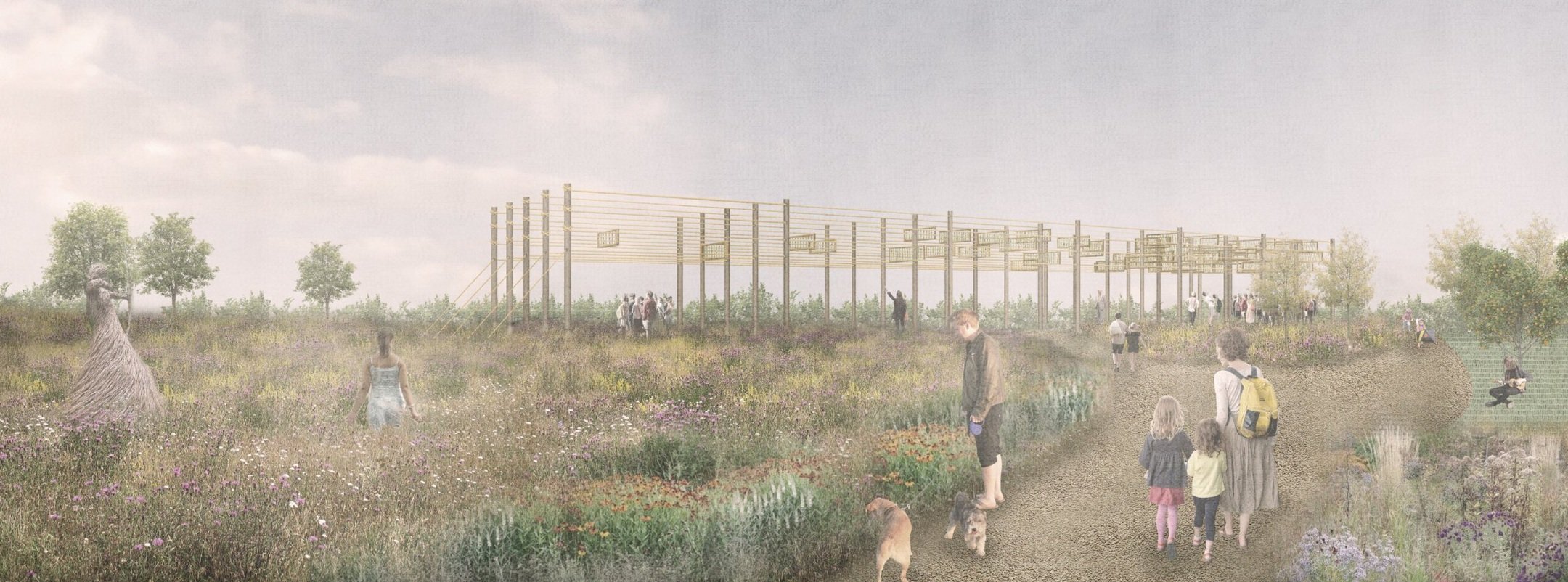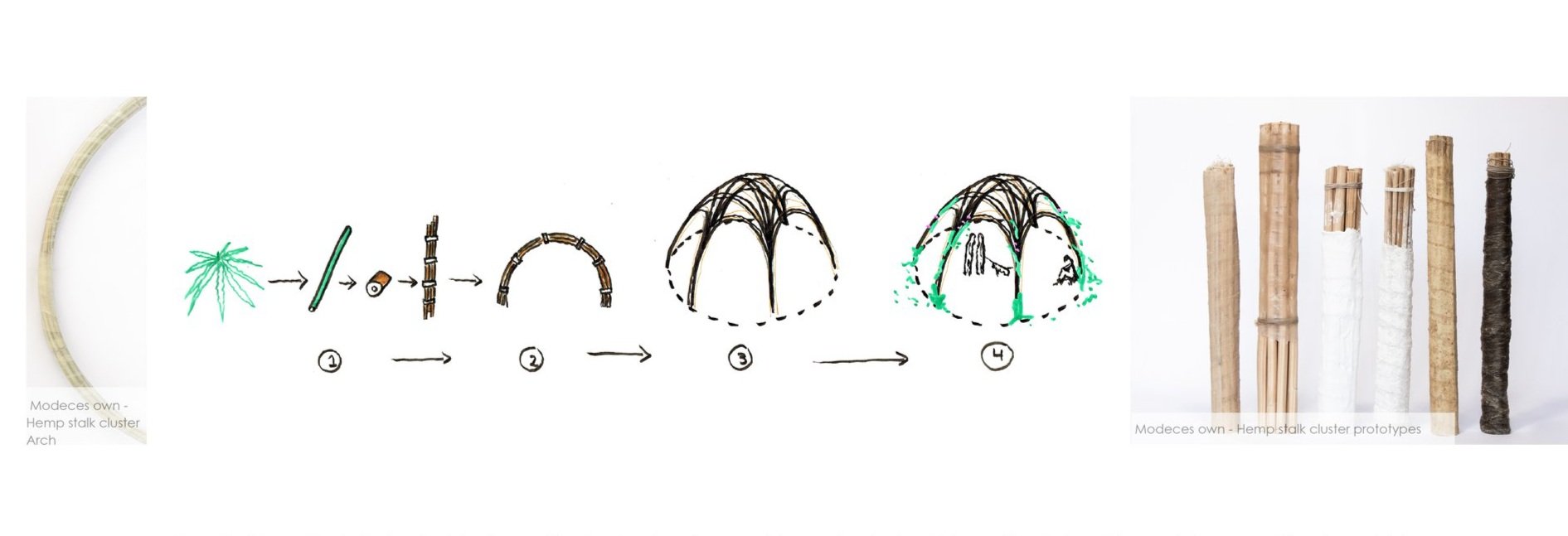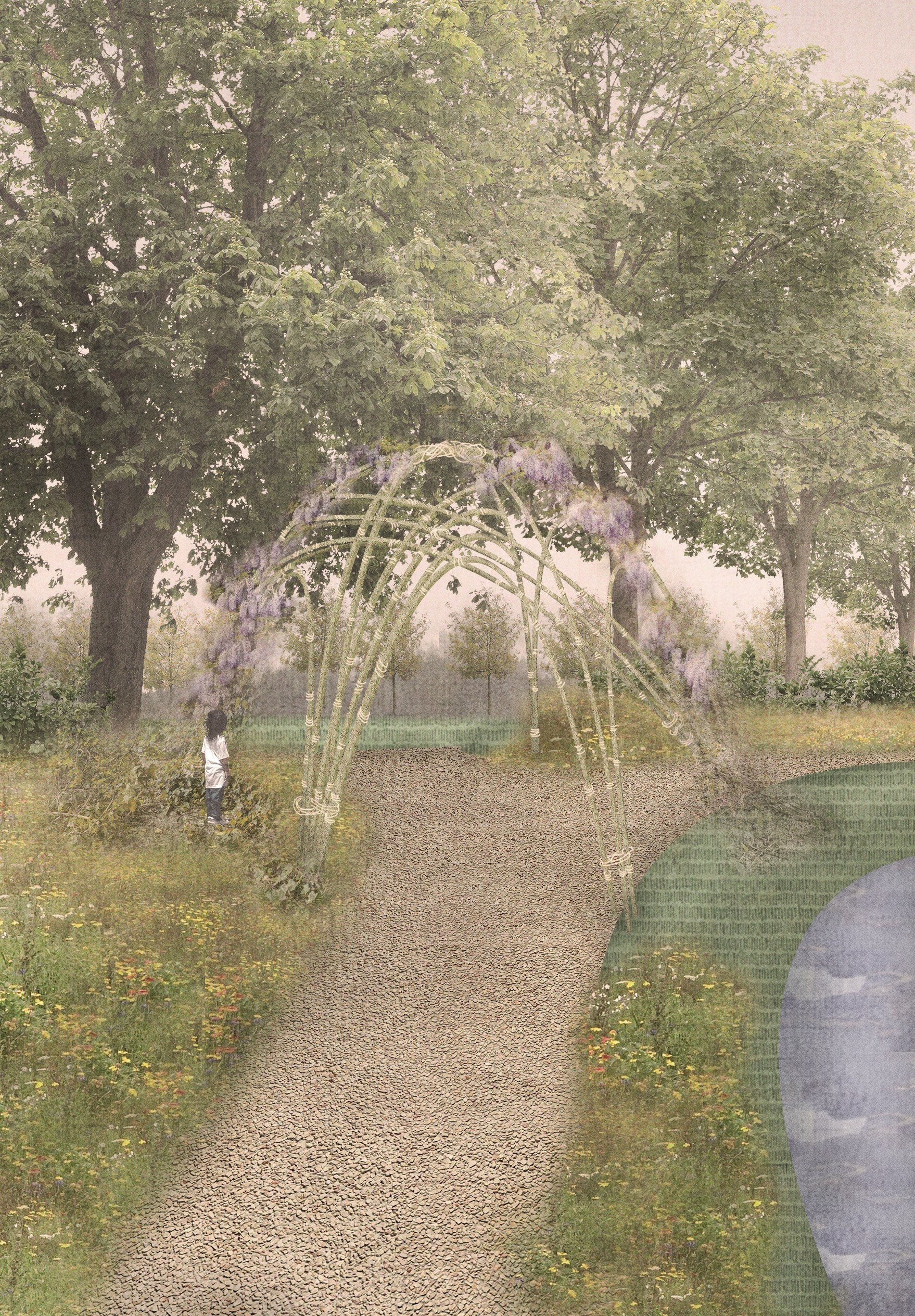Warp and Weft
Public art and wayfinding competition for Stonewater’s George Blunden Public Art Prize, 2021 - Castle Cary.
In a call for creatives from all disciplines, the competition set out a brief for developing public art pieces in Stonewater’s development of Mulberry Meadows in Castle Cary.
Initially, we approached the competition with intense research into the site’s history to understand its context and meaning to the town. As early as 1327, Castle Cary was known for its textile weaving, primarily producing coarse linen fabric and rope. In the late 1700s, the Donne family established Flax Mills, weaving with flax to make things such as twine, sailcloth and webbing. In the early 1800s, John Boyd began weaving horsehair fabric, which was used particularly for upholstery.
From this textile history, we started playing with the idea of “Warp and Weft”, the two basic components used in weaving to turn thread or yarn into fabric. The longitudinal warp yarns are held stationary on a loom while the transverse weft is drawn through and inserted over and under the warp.
Our proposal takes inspiration from the local history of textile production and factory processes, which are ingrained into the town. Much like the process of bringing individual and distinctly separate parts together into the single entity of a woven fabric, we want our proposal to weave together the community of Mulberry Meadows. Our five art pieces create a sense of place and encourage engagement and social exchange. The structures blend the lines between art, architecture, place-making and landscape; they integrate the site into the town’s history while providing a distinct identity for the residents of Mulberry Meadows. The five pieces range in scale and encourage engagement in different manners. ‘Wayfinding’ identifies the access to the site and introduces the Warp and Weft concept; ‘growing’ provides a communal garden space for the residents; ‘gathering’, the largest intervention, is a pavilion. It provides the framework under which events can be held, exhibitions displayed, or games conceived. ‘discovering’ is a small sculptural piece to be found while exploring the nature trail, and; ‘meeting’ is a landscape structure which spans the convergence of paths, creating a natural meeting place within the site.
We also incorporated our research into hemp construction within the proposal to ensure the final creations were as highly sustainable, innovative, and environmentally friendly as possible, whilst also allowing for moments of public engagement during the design and construction of the artworks.
Our analysis of the site
‘Gathering’ is a pavilion on the wild meadow’s northeast side. It is flanked by the community orchard and the attenuation pond and straddles the nature walk pathways. The structure lies along the principal axis running across the landscaped area of the site. When viewed from the central village green, the build floats out into the meadow. It is a striking form that draws residents out into the landscape. It carves out a new space on the site for gatherings to occur.
‘Meeting’ is the convergence of three routes and provides the gateway between the informal play area and the meadows. It is designed to span this meeting of paths and to promote the slowing of people walking past. Walking under the artwork, your pace drops to enjoy the structure and smell the Wisteria. The chance of stopping and talking to others is increased by slowing people's pace. The artwork is named ‘meeting’ as it defines the meeting of paths, but more importantly, it will result in the meeting of new acquaintances.
‘Wayfinding’ is the smaller cousin of ‘gathering’. It is located at the front of the site, visible from the passing highway, and identifies the access to the site but also gives a precursor to the artwork that can be found beyond. The artwork also takes its inspiration from the former John Boyd horsehair factory. It replicates a single run of the timber posts with rope strung between.
The final installation will be a flax seed head sculpted using hemp stalk and twine. The installation will be on the southeast corner of the pond and provide a sense of intrigue upon discovering the piece as you walk the site. The work will help to draw the local community onto the Mulberry Meadows site, building a sense of local ownership of the land and encouraging engagement as locals discuss the work and its historical significance for the town.










